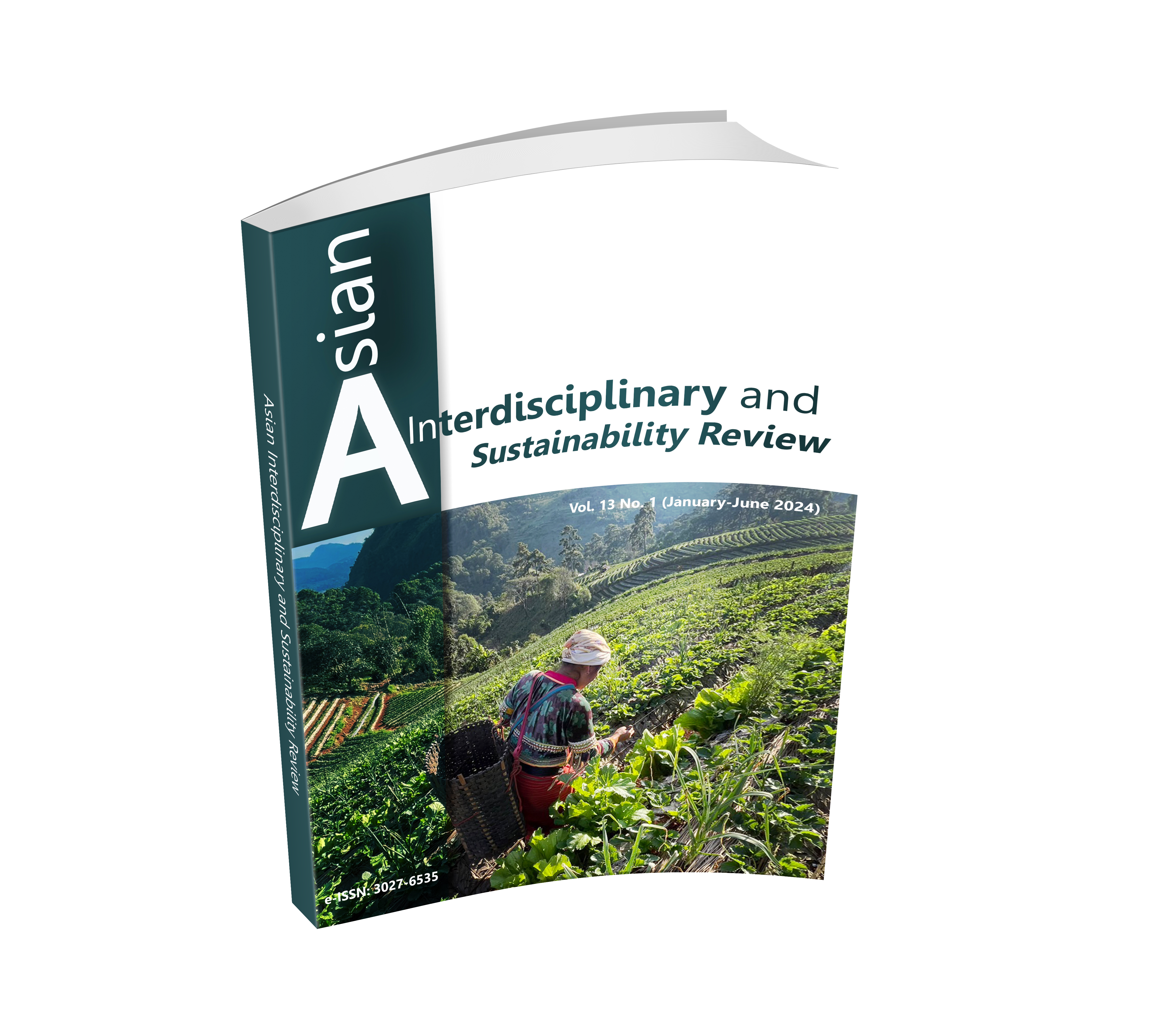COMMUNICATION GUIDELINES FOR CREATIVE HOMESTAY MANAGEMENT AT BAN PIYAMIT 1, YALA, THAILAND
DOI:
https://doi.org/10.14456/aisr.2024.5Keywords:
Communication Management, Homestay, Tourism, BetongAbstract
This research aimed to study 1) the context of Ban Piyamit 1, Yala, Thailand; 2) to study 5A components of Ban Piyamit 1; and 3) to explore communication guidelines for homestay management. Creative research in Piyamit Village. This research is a qualitative study. The key informants included travel group leaders, homestay owners, community tourism management committee, entrepreneurs, and tourism police, totaling 20 people, selected through purposive sampling. Research tools utilized in the study encompassed in-depth interviews, group discussions, and observations. Data were analyzed using descriptive analysis. The research found that Ban Piyamit 1 boasts an important tourist attraction, namely the Piyamit Tunnel, characterized by a distinctive appearance that yields tangible benefits. Factors influencing communication for creative homestay management encompass 1) tourist attraction, 2) accessibility, 3) accommodation, 4) activities, and 5) ancillary services. The guidelines for community tourism development include 1) the promotion of unique local cuisine specific to the area, 2) the presentation of appealing cultural and traditional activities, 3) the proficiency of tour guides, 4) the natural and suitable ambiance of accommodations for relaxation, and 5) ensuring safety and comfort during stays and rest. Communication guidelines for creative homestay management in Ban Piyamit 1 encompass both internal community communication and external community communication. This involves collaborative thinking and planning, with members engaging in discussions to formulate policies and common practices for the development of creative community tourism activities.
Downloads
References
Chinsomboon, M. (2019). Community Participation in Developing Tourism Attractions in Watthana Nakhon, Sa Kaeo, Thailand. PSAKU International Journal of Interdisciplinary Research, 8(Special Issue), 49-56.
Dann, G. (1977). Anomie, ego-enhancement and tourism. Annals of Tourism Research, 4(4), 184-194.
Devu, S., Akshay, M., Ekanath, S., & Arun, K. (2020). Relevance of 5A’s in tourism: A case study at 3 destinations in Karnataka. International Journal of Psychosocial Rehabilitation, 24(7), 10241-10249.
McIntosh, A., Hinch, T., & Ingram, T. (2002). Cultural Identity and Tourism. International Journal of Arts Management, 4(2), 39-49.
Office of the National Economic and Social Development Board. (2018). The 20-year national strategy 2018-2037. Retrieved from www.nesdc.go.th/download/document/SAC/NS_PlanOct2018.pdf.
Phongkraphan, N., Jianchatchawanwong, S., Suttikan, M., Kaewlek, S., Sinthavee, J., Srimaca, P., & Kasor, S. (2024). Innovation in Conservation Tourism Management, Community Groups Talo Makon Dam at Ban Bike, Yala, Thailand. Asian Administration and Management Review, 7(1), 54-63.
Qun, L., Leelapattana, W., Trakansiriwanich, K., Waiapha, Y., & Sitthikun, S. (2022a). Market Mix Factors Affecting Thai Tourists' Decision to Use Small and Medium-Sized Hotels under the Critical Conditions of the Covid-19 Pandemic in Chiang Mai, Thailand. Asian Administration and Management Review, 5(2), 77-85.
Qun, L., Leelapattana, W., Trakansiriwanich, K., Waiapha, Y., & Sitthikun, S. (2022b). Management Adaptation Model of Small and Medium-Sized Hotel Business During the Covid-19 Pandemic: A Case Study in Muang District, Chiang Mai Province. Journal of Interdisciplinary Research: Graduate Studies, 11(2), 178-187.
Sakulrat, T. (2020). Homestay Service Development Guidelines to Accommodate Tourists for Phra Nakhon Si Ayutthaya Province. Journal of Social Science and Buddhistic Anthropology, 5(6), 405-420.
Streimikiene, D., Svagzdiene, B., Jasinskas, E., & Simanavicius, A. (2021). Sustainable tourism development and competitiveness: The systematic literature review. Sustainable Development, 29(1), 259-271.
Tangkaew, W. (2011). Cultural Tourism Management in Chiangkhan Community, Chaiangkhan District, Loei Province. Master of Urban and Regional Planning Thesis, Chulalongkorn University.
Thampramuan, P., & Tekhanmag, K. (2020). The development of creative tourism management based on the cultural capital to the community economy of the Pheunkaset Homestay Club, Wisetchaichan district, Angthong province. Silpakorn University Journal, 40(1), 65-83.
Wangchan, R., & Worapishet, T. (2019). Factors Influencing Customer Loyalty in Hotel Business: Case Study of Five-Star Hotels in Bangkok, Thailand. Asian Administration and Management Review, 2(1), 86-96.
Wu, M., Li, C., Zhao, X., & Guo, X. (2019). Analysis on the Feasibility of the Development of Cultural Tourism Resources in Pingtan Tourist Island. A paper presented at the 5th International Conference on Social Science and Higher Education, Xiamen, China.

Downloads
Published
How to Cite
Issue
Section
License
Copyright (c) 2024 Authors

This work is licensed under a Creative Commons Attribution-NonCommercial-NoDerivatives 4.0 International License.











.png)


